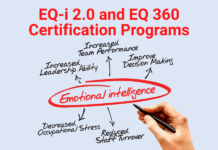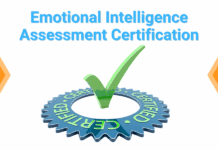
Do you feel fulfilled at your job? Apparently, not many of us do, although there are some indicators that trends are improving. However, studies and articles in the last few years also point to the work ahead in helping employees feel more engaged. (See how the Energy Project interviewed over 12,000 employees and found that 50% report a lack of meaning and significance at work.)
In June 2014, a Fast Company article, shared that increasing a sense of meaningfulness at work is one of the most effective ways to increase productivity and engagement. But what does it mean to provide “meaningfulness?”
- It’s when the workplace exists for more reasons than just to “make” money.
- It’s when team members understand how their involvement improves the quality of life for customers and the community.
- It’s when there is a strong link between team member tasks and the goal of serving a greater good.
Here’s a great example.
Some time ago in Fort Collins, CO, a teenager who fell 80 feet from Horsetooth Rock was able to meet and thank the 47 rescuers who had a part in getting her off the mountain and to the hospital.
Hannah Schall was emotional as she reunited with these folks. One of the rescuers said, “It’s rare that we get to meet someone we rescued, to see that they are doing fine. It’s really good.”
Some of you may be thinking, “Well, of course, that group is feeling the warmth of serving the greater good! But what about me in my day-to-day, sometimes mundane, job?”
For many of us, our day-to-day job isn’t about saving lives, teaching kids, or feeding the hungry. It may be more about selling a product, handling transactions, or waiting tables. We have meetings, fix computers, and finish reports.
However, there is still a connection between the mundane and “serving the greater good.” The public service worker cleaning trash behind the scenes contributes to a better festival experience for thousands. The surgical tech who sterilizes tools contributes to a hospital’s low infection rate. The assistant who answers customer service email contributes to valuable materials getting into the hands of teachers around the world. Taking pride and making the connection from our little corner to the bigger picture can give us meaning. We also can engage in activities outside the workplace like volunteering, delivering meals, collecting food for the homeless and more.
If you are a leader, have you incorporated a way for your team members to engage in meaningful activity by 1) helping them connect their tasks to a greater purpose and 2) giving them opportunities to volunteer on work time?
It may take some creative thinking and rallying of energy, but you can do it. Take a look at VolunteerMatch.org, to find ideas of where your employees can help. Collect needed items by sponsoring a collection drive among your employees and customers. Pay for your team to take part in a fundraising 5K and help their health AND community engagement. The possibilities are there…you just need to catch the vision and open the doors for your team.
Give people in your organization a firm foundation of meaning and significance – a common ground of service to others, and you’ll likely see their enthusiasm about their work grow, too.
Photo © Monkey Business – Adobe Stock. All Rights Reserved





